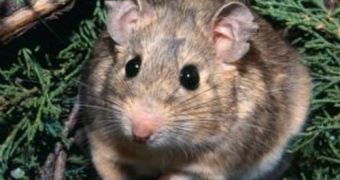Packrats in the southwestern parts of the US were subjected to a very drastic change in scenery, from 18,700 to 10,000 years ago, as the region in which they lived gradually became warmer. The juniper trees, their main source of food, and the most enjoyable at that, disappeared due to the increased temperatures, and made way for the poisonous creosote bushes. Because they had no death wish, the rats adapted to the change and now researchers at the University of Utah (UU) want to find out exactly how they can eat poison and not pay the ultimate price.
The biologists are basically looking for the detoxifying genes that allow the rats to process the parts of the bushes they eat, and to strip them of the poison they contain. Explaining the “choice” packrats, or woodrats as they're also called, had to make, the senior author of the study, UU Professor Denise Dearing says that, “It was either eat it or move out. We don't really understand how wild animals process their diets, and how herbivores can feed on really toxic diets. If we can understand it, we may be able to understand how they will deal with climate change.”
For the new study, which will be published in the April 7th issue of the scientific journal Molecular Ecology, UU researchers have collected 16 rats from the American Southwest – eight from the Mojave Desert and another eight from the Great Basin. They have been given rabbit chow mixed with creosote or juniper to eat, and the researchers have then looked for variations in their genetic “blueprints,” namely for “biotransformation genes.” These genes are produced in the liver and are necessary for detoxifying otherwise-deadly food.
“We found 24 genes in woodrats from the Mojave Desert that could be key in allowing them to consume leaves from creosote bushes. The leaves are coated with a toxic resin that can comprise up to 24 percent of the dry weight of the plant,” Dearing explains. She adds that the plant itself may be producing poison on account of global warming. “The toxins in creosote could respond to increases in carbon dioxide. The plants may make more toxins under elevated CO2 conditions because these toxins are built from carbon atoms.”
“I see this as a tale of two poisons or a tale of two diets – two populations of the same species that feed on very different staple foods: creosote and juniper. It's like suddenly having your food coated with a different poison than you are used to. It's interesting to see the response of these animals to a natural climate change event where they were forced to change their diet and adapt to a new type of toxin,” she concludes.

 14 DAY TRIAL //
14 DAY TRIAL //